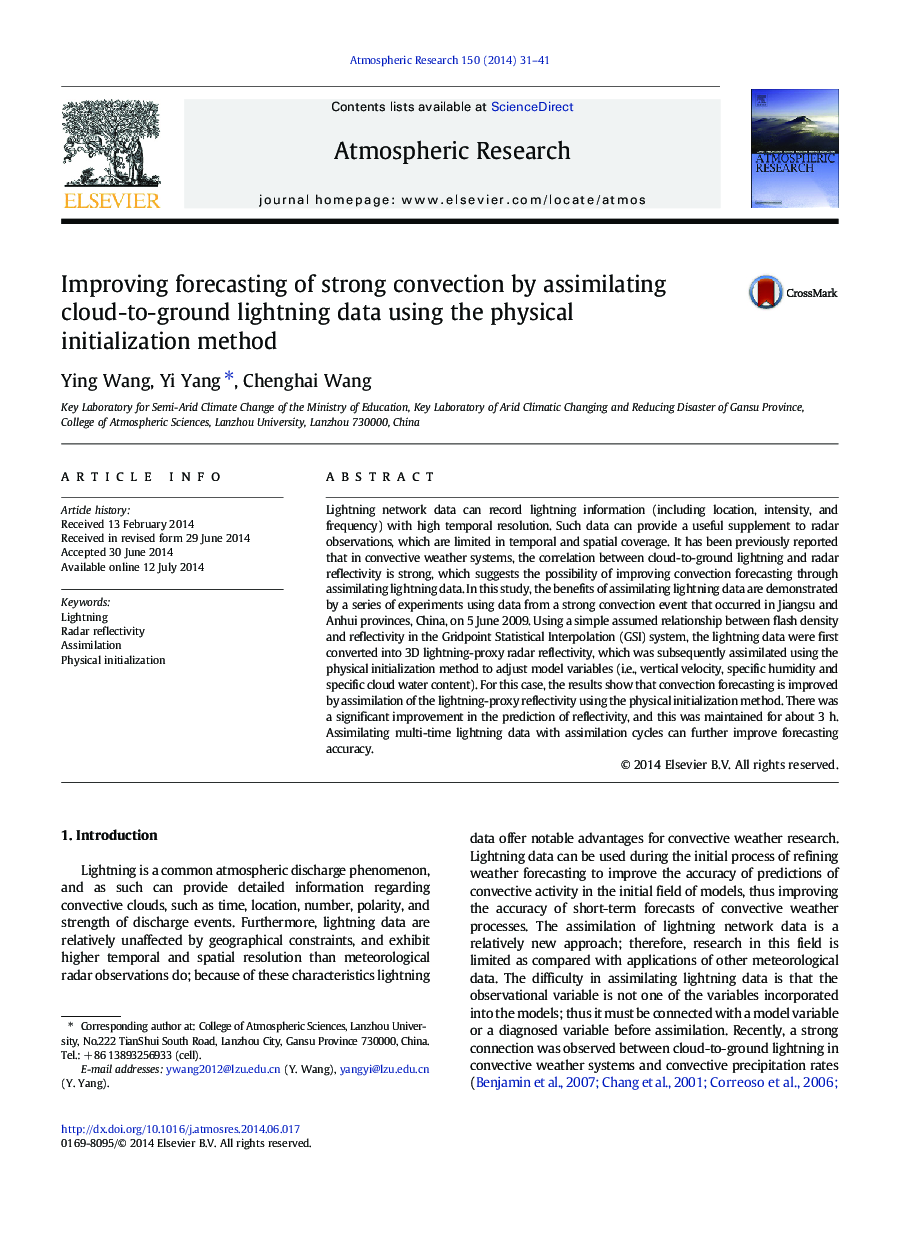| Article ID | Journal | Published Year | Pages | File Type |
|---|---|---|---|---|
| 4449813 | Atmospheric Research | 2014 | 11 Pages |
•Lightning is converted to reflectivity using a relationship in cloud analysis package of GSI.•Lightning-proxy reflectivity is assimilated via physical initialization method.•Significant improvement in the prediction is achieved and maintained for about 3 h.
Lightning network data can record lightning information (including location, intensity, and frequency) with high temporal resolution. Such data can provide a useful supplement to radar observations, which are limited in temporal and spatial coverage. It has been previously reported that in convective weather systems, the correlation between cloud-to-ground lightning and radar reflectivity is strong, which suggests the possibility of improving convection forecasting through assimilating lightning data. In this study, the benefits of assimilating lightning data are demonstrated by a series of experiments using data from a strong convection event that occurred in Jiangsu and Anhui provinces, China, on 5 June 2009. Using a simple assumed relationship between flash density and reflectivity in the Gridpoint Statistical Interpolation (GSI) system, the lightning data were first converted into 3D lightning-proxy radar reflectivity, which was subsequently assimilated using the physical initialization method to adjust model variables (i.e., vertical velocity, specific humidity and specific cloud water content). For this case, the results show that convection forecasting is improved by assimilation of the lightning-proxy reflectivity using the physical initialization method. There was a significant improvement in the prediction of reflectivity, and this was maintained for about 3 h. Assimilating multi-time lightning data with assimilation cycles can further improve forecasting accuracy.
